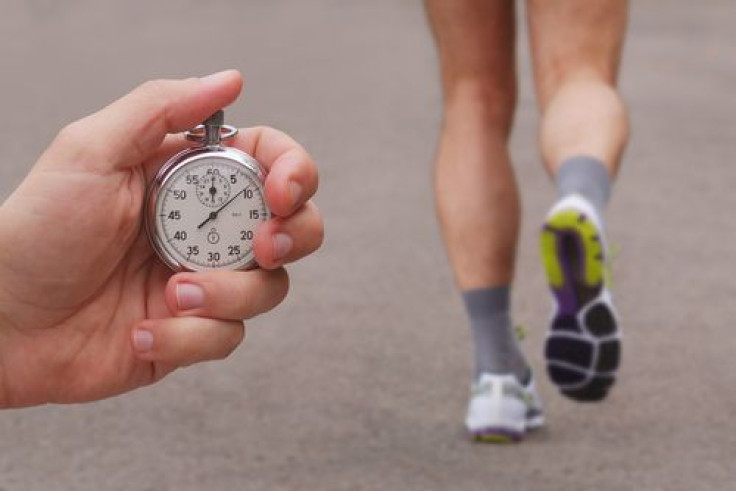Optimal Running Pace Can Be Calculated With New Set Of Mathematical Equations

Runners, on your mark, get set, solve. Two French mathematicians approached running with an equation to find out what the perfect mix of physical exertion and speed was in order for an athlete to run their best race, and published their findings in SIAM Journal on Applied Mathematics. Training, hydrating, and eating right are all key components to getting the runner across the finish line, but math equations argue if they don’t apply an optimal running strategy to the race.
"By modeling running in the form of equations and then solving them, we can predict the optimal strategy to run a given distance in the shortest amount of time," the study’s coauthor Amandine Aftalion, said in a press release. "Our model relies on two basic principles: energy is preserved, and acceleration (or variations of velocity) is equal to the sum of all forces. This leads to a system of differential equations coupling the unknown variables of the runner (velocity, propulsive force and anaerobic energy), and dependent on physiological parameters such as maximal oxygen uptake and total available anaerobic energy."
In 1974, mathematician Joseph Keller said the most optimal way to run a race is for the athlete to keep their pace at a constant speed. They’ll be able to maximize their oxygen uptake to fuel their body with the energy it needs to cross the finish line until it drops off at the end. However, Aftalion and the study’s coauthor Frederic Bonnans, found runners cannot simply keep a constant speed because we’re not machines. Instead, the body will vary its speed within 10 percent and will actually improve the velocity to allow them to run better, longer.
It’s all based on optimal control theory, which sets boundaries for the object in motion. In this instance, the object is the runner and they’re limited by factors, such as strength, agility, stride length, weight, and breathing techniques. A strong respiratory system can improve an athlete’s running significantly, considering it delivers oxygen to your muscles, which equals more endurance to last longer, according to Runner’s World. The equation proves the body adjusts itself to optimize depending on all of the variables involved in running. It’s the first time mathematicians have come up with a full numerical solution to an individual athlete, and Aftalion and Bonnans hope to calculate optimal situations for a wide variety of athletes to help them improve their times.
"From this we can predict how to run an ideal race, both for a champion, helping him improve his performance and win a medal, as well as for a regular runner who lacks professional coaching and seeks help,” Aftalion said. “Our predictions corroborate actual strategies used by professional athletes. In the future, we plan to adapt our model to other sports such as biking, triathlons, or other endurance sports, maybe cross country skiing.”
Source: Aftalion A and Bonnans F. Optimization of running strategies based on anaerobic energy and variations of velocity SIAM Journal on Applied Mathematics. 2014.



























